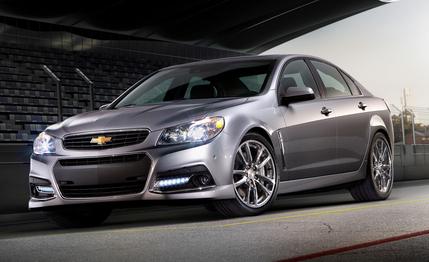If you want to buy a speedy car, you have lots of options. This ought to be a good thing, but the truth is that numbers can lie if you don’t have the whole picture. Here’s what you need to know if you are evaluating cars based on performance.
The Horsepower-Weight Ratio
The ratio of horsepower to weight plays a huge role in how speedy a vehicle actually is. Fortunately it’s easy to calculate it. You’ll need to divide the curb weight of the car by the horsepower. That’s how many pounds each horse under the hood has to move.
If you look at a 3000 pound car with 300 horsepower, you can see that each horse is moving ten pounds. Now take that same 300-horsepower engine and put it in a 4000-pound or 5,000-pound SUV. Each horse must move 13.3 pounds or 16.5 pounds. These bigger vehicles are underpowered and thus will underperform.
When a car won’t perform, the driver has to drive more cautiously. They have to accept their limits and keep to the slow lane. It’s dull, but it’s the smart thing to do. If you don’t want to accept those limits, calculating the horsepower-weight ratio on each used car should help you buy the more exciting one.
The Horsepower-Torque Connection
The torque rate is often ignored by people who don’t love driving. But for driving enthusiasts, this can be the most important number. That’s why today’s turbos emphasize high torque rather than horsepower. If you take a 4000-pound car with 300 horsepower, as already stated, it is underpowered. However, if you add high torque, you may have the push you need.
Torque is what actually gets your car moving. It’s how the weight of your car is propelled forward from a stopped position. It’s how your car gets enough momentum to pass another car on the highway. For off-roading, at low speeds, torque can create the push needed for a slow crawl over uneven terrain.
While the focus can’t be solely on torque, it is a big part of the equation. There are more and more speedy cars where the torque rate makes all the difference. If you are shopping for used cars, you can find plenty of information online even if you are at the dealership. Watch the torque number and be wary if the torque isn’t, at least, above 250 pound-feet. Ideally it will be 300 pound-feet or higher.
The Sexy Sell-Out
One thing that drives true driving enthusiasts crazy is the sexy sell-out. You know that car. Although it looks sleek, it weighs a ton and doesn’t have enough horsepower or torque to deal with that weight. Or, the weight is down, but the performance numbers are dropped as well. Either way, you have a disappointing car that only impresses people who see it at a redlight.
Just remember not to have your head turned by something that looks the part but can’t really play it. Millions of buyers have wasted their money like this over the years and had to live with their mistake. With the cost of cars, you don’t want to be one of those people.
The Stupid Steering
Last but not least, a speedy car is only as good as its transmission, suspension, and steering. These things can be harder to evaluate before you own the car. It’s good to read up on the brand you are considering. Automotive journalists will tell you if they don’t like the ride quality or the responsiveness. These are the cars to avoid. A car should respond to your cues quickly, making the most of that horsepower and torque.
Now that your mind is on the stats, you are more likely to purchase the sports car of your dreams. Keep your eye on the numbers and don’t let your emotions sweep you away with the first gorgeous car you see. It’s your money and your dream. You have a right to demand the best.


